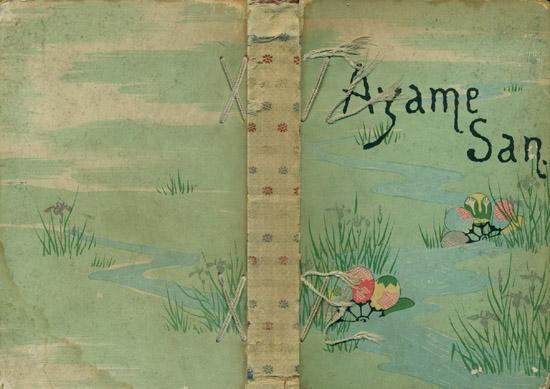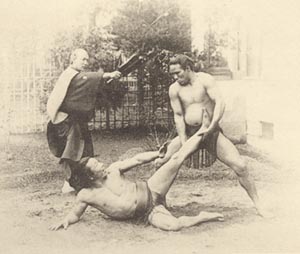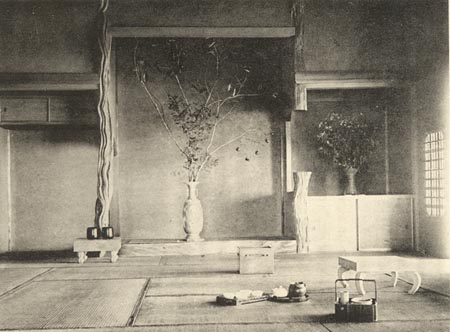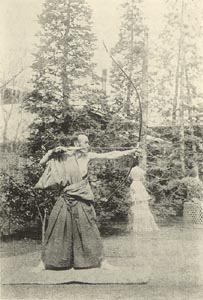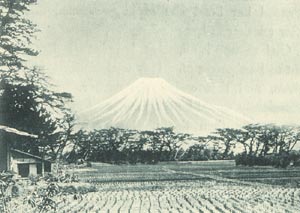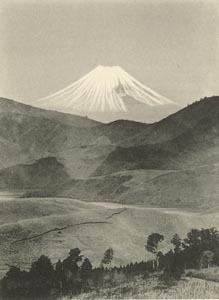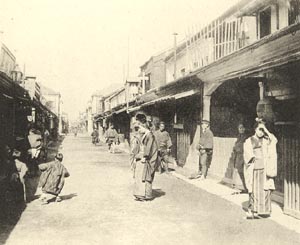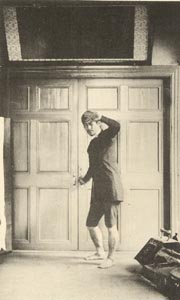Ayame San, A Japanese Romance of
|
|
Murdoch, J. (A.M.) Burton, W.K. (photographs) Ogawa, K. (photographs & photomechanical reproductions): Ayame San, A Japanese Romance of the 23rd Year of Meiji (1890), Yokohama, Kelly & Walsh, London, Sampson Low, Marston & Company, Ltd and London, Walter Scott, 1892, 8vo (6 x 9 in), cardboard covers with paste on illustrated paper, cloth covered spine, photographs taken primarily by Kazumasa Ogawa and W. K. Burton, 77 text illustrations, 3 of which are full page, 2 pp errata, 310 pp. While the front and back covers have cord ties, these are ornamental only and merely attahced to the front and back boards. The book is a romance type novel set in Japan of the late 1880s and early 1890s. The lead characters are O'Rafferty - an Irishman, Gifford - an American of Scottish descent and Ayame-san, a fair Japanese lass. Ayame-san learned English from a "faymale" missionary. Through the eyes and interaction of these three characters, Murdoch gives the reader a wonderful view of Meiji Japan and the interaction between the relatively new arrivals (Westerners) and their hosts. Ayame-san's romance was not with either of the foreigners. She ultimately married Ishida Taro, an rising Japanese politician. While the numerous high quality images do not actually reflect the plot, they are sometimes loosely related to the text. They were clearly selected with great care to provide the reader a comprehensive visual image of Japan.
I have listed the imprints in the order of frequency that I have observed on the market. Kelly & Walsh seems to be the imprint most frequently offered while the Walter Scott imprint is seldom seen. Aside from the title page, the books are essentially identical. None of the books I have seen carry a date of publication. Wenckstern gives 1892 as the year of publication in Yokohama (no publisher stated) and notes the book was sold for $6.00 in a wooden box. I presume the books with the two London imprints were produced in the same year. I suspect all the books were printed and assembled in Japan with the various imprints above. The title page credits the illustrations to W.K. Burton with printing by K. Ogawa. However, in an acknowledgment statement directly behind the title page, Burton states:
I beg to acknowledge my indebtedness to Mr. K. Ogawa for some of the best illustrations in the volume; also to Professor C.D. West of the Imperial University and to Mr. G. Brinkworth for one photograph each. So far as I am aware this is the first book that has been illustrated with true half-tone photo-mechanical reproductions printed with the letter-press. I believe that the noted photographer, Kazumasa Ogawa, contributed extensively to the illustrations in the book and Burton was trying to correct the title page which gave him sole credit in this regard. K. Ogawa's printing facilities were used to create the halftone illustrations. The images in the book are not what you typically envision from a half-tone process. They do not have the dot screen you normally associate with that type of reproduction. Instead the images are remarkably similar to those created by the higher quality collotype process for which Kazumasa Ogawa was widely respected. I believe that the images in this book were produced by a halftone process known as Meisenbach process. They are not a crisp and clear as collotypes but lack the screen pattern often seen in other halftone screen process. Covers and Bindings. The book has relatively inferior covers and bindings. The front and back boards are thick cardboard upon which thin illustrated paper has been affixed. The cover illustrations appear to be color woodcuts. The front and back covers are tied to the body of the book by the hinge of the front and rear end pages. The insides of the boards and the first and last end pages are illustrated in color. There is no attachment to the spine. This is a very flimsy attachment of the covers. There are two crossed strings on front and back cover. However, these are ornamental only and they are merely affixed to the boards. These stings do not extend through the text blocks as sting ties in Japanese books generally do. The spine has a thin cloth covering. The text block of book is composed of numerous small sections/signatures which are joined together by 5-6 thin strings. The book is 1+ inch thick. When you combine the flimsy bindings and thin spine covering with the thickness of the book, it is very usual (perhaps the norm) to find the book with boards detached or partially detached and the spine cover missing or badly deteriorated. The books were sold with a thin ribbon bookmark inserted (generally red or blue). Often the book is seen without the bookmark but with the color stain line left by it. James Murdoch (1856-1921). James Murdoch first traveled to Japan in 1889 where he worked as a teacher in a series of high schools around the country. In 1893 Murdoch left Japan for Paraguay but he later returned. Although he did not begin to study Japanese until he was almost 50, he eventually became proficient in both modern and classical Japanese. He returned to Australia in 1917 and passed away in 1921. Murdoch is best known for his three volume A History of Japan (London, Kegan, Paul, Trench, Trubner & Co., 1926). Murdock often used the initials "J.M." and "A.M." as identification in his works. In June of 1890 Murdoch published a satirical verse, Don Juan's Grandson in Japan. He also published a weekly magazine, The Japan Echo, which lasted for only six issues (Nov 1890 through Jan 1891). Georges Bigot contributed art to that periodical. In 1892 Murdoch published From Australia and Japan (3 editions recorded). W.K. Burton. For information on Burton and his publications, click here. For information on Kazumasa Ogawa, click here.
Full Page Illustration.
Full Page Illustration. Number Page
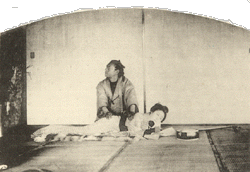 Shampooer massaging young woman |
|
The Perry Expedition: General Information : Related Books/Pubs The Lithographs: Characteristics : Condition : Listing : Buying Order On-line: Lithograph Price List : Book Price List ABE Book List: BaxleyBooks Inventory on ABE Special Interest Books/Art: ~ K. Ogawa - Color Collotypes and Books/Prints ~ T. Hasegawa - Color Woodblock Books ~ Shimbi Shoin - Art Reproduction Books ~ Tamamura/Takagi, Kobe - Color Collotype Books ~ Georges Bigot - Etchings & Art ~ Keisuke Serizawa - Calendar Folios & Art ~ Woodblock Printing - Process & Miscellaneous Books ~ Japanese Woodblock Prints ~ Blackie the Photographer - Okinawa Photo Essay Books Meiji Era - Japan Views & Images (Price Lists & Information): ~ Albumen Photos : Chromolithographs ~ Colored Albumen Photographs (from Brinkley Books) ~ Stereoviews : Kazumasa Ogawa Collotypes ~ CDV - K. Ogawa : CDV - Other : Cabinet Cards ~ Glass Slides, "Magic Lantern" - Hand Colored ~ Fujiya Hotel, Miyanoshita PayPal Accepted: Pay for Purchases with PayPal Buying Books: Our Book Buying Interests BaxleyStamps: Main Page : Ryukyu Stamps : Japan Stamps Copyright and Fair Use Policy is here.
|
|
If you have material to sell, please visit this page: Buying.
George C. Baxley
Perry Expedition to Japan Books & Lithographs |

